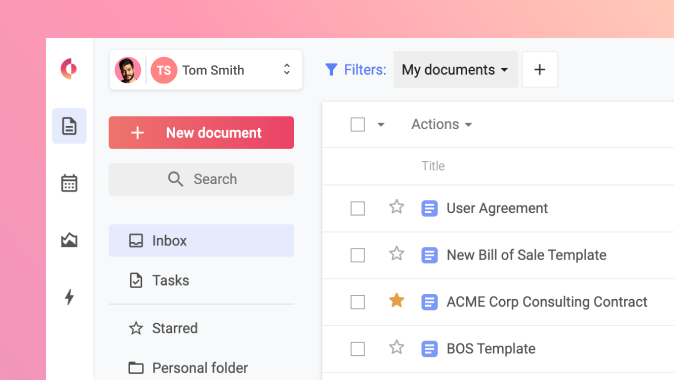3 Ways Manual Contract Processes Put Companies at Risk
If a company is still using manual processes to manage contracts, it’s not only costing them money but putting the organization at risk for legal issues and more. Digitizing contracts not only enables employees to work faster and smarter, but it mitigates risk, allowing the legal team to focus less on damage control and work more towards a strategic positioning.
These are three common ways that companies put themselves at risk by keeping manual processes in place, and how to avoid them by transforming how contracts are managed.
Errors and Additional Work
Without a cloud-based automated platform to streamline processes, it’s difficult to find errors, much less correct them. Rogue contracting is a common practice in organizations that don’t have clear practices outlined or a single source of truth for all documents. Even if employees are using a template, often it’s an outdated version that was saved directly to their desktop and never updated. Working this way means that the legal team is often not looped in, and if they are, much of the approval process is spent updating clauses and terms that were already created in another template.
All of these issues can be ameliorated simply by moving to a full contract lifecycle management platform. With templates in place that are automatically updated, there’s no risk of using an old clause that could set the company up for risk. Simply the knowledge that there’s a platform in place will help employees remember that they need to create a contract and use it.
Security
Manually creating contracts puts a company at risk, especially after the contract is signed. Storage is a key part of the contract lifecycle, and any solution that doesn’t have bank-level security might not be enough to protect sensitive documents.
In addition to storage, there are certain eyes that should see a contract and others that should not, even within an organization. If documents are stored in a file cabinet or even on a shared drive, there’s a risk of security being breached without the proper viewing rights. A successful platform should have access controls that give people access only to the documents they need—making the documents not only more secure, but the platform cleaner and easier for users as they only see what’s directly relevant to them.
Legality
Since a contract is a legally binding document, any mishaps could cause serious implications for a company. That means ensuring everything from the way documents are stored to the way they are signed is essential for mitigating unnecessary risk. Having the right amount of visibility to manage things such as renewals and timing is critical for risk-free contracts.
The good news is, with a contract lifecycle management platform, the legal team has full insight into every single contract within a company. IT teams are able to verify the security of a platform and set up the right controls, whether it’s single sign-on or access controls. Moreover, contracts e-signed within such platforms are fully legal, as e-signatures are legally binding all over the world under country-specific regulations, e.g. the ESIGN Act and eIDAS regulation.
Embrace digital transformation with CLM software
With these three concerns taken into account and solved, any organization’s contracts should be much safer. As digitization becomes essential to keeping up with the pace of business, it’s critical to make sure that risks are kept low to ensure success and the ability to scale with confidence.



